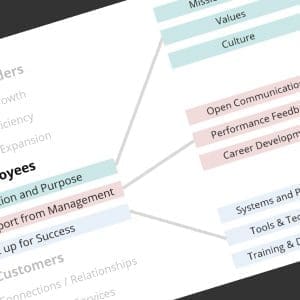How much rigor does any decision really need? One clue might be to look at the number of significant digits you will be presenting.
Say you are asked to present the cost impact of IT systems on a major acquisition or merger. Based on the context of the conversation – the macro-financials, the pay-back models, and the YOY growth plan for the next five years, you will probably be delivering a single slide that shows $20M in cost and/or benefits to remediate the systems at NewCo.
Two significant digits – and the overall transaction is 15x EBIT, so we’re talking a purchase price of $2B. Nothing personal – but that IT cost impact is not going to make a big dent in the strategic acquisition logic.

Another example – the CFO expresses her interest in implementing a comprehensive ERP system to massively streamline and automate the financial recording process, driving accuracy up and working capital (for example) down. The first questions are always “how much?” and “how long?” – and my first answer will always be “$2M and 9 months”.
An answer in 1 day – directionally accurate, but nothing I would commit to as a final Not To Exceed number. It answers the first question with credible accuracy, but allows the conversation to switch to more important topics – process improvement, change management,and master data accuracy
Paralysis by Analysis
So don’t kill yourself to get a hyper-accurate estimate, within 10% of the final number – especially if you are early in the process. A much better approach would be to build up an intelligent, defensible model for a typical IT integration or ERP rollout project, that makes reasonable assumptions based on the few bits of information that inform the costs. I have seen (and built) models that ask a few simple questions (How many warehouses? large/small? How many employees?), which are then extrapolated to an entire budget; do this right, and you can give a defensible answer to a fairly sophisticated question in five minutes.
Remember, the objective of the exercise is to quickly develop a Rough Order of Magnitude (ROM) estimate of costs for the acquisition, the ERP implementation, or any “really complicated” effort. You are shooting for “good enough” here – so I can make that first go/no go decision. Remember, the number of significant digits in the answer is a major clue – you ask for a simple answer, you will get a simple estimate.
Of course, this is all caveated with the understanding that you will need to scrub the numbers more thoroughly when it’s time to put together the Capital Request for the entire project. Gotta manage those expectations …





Comments (0)